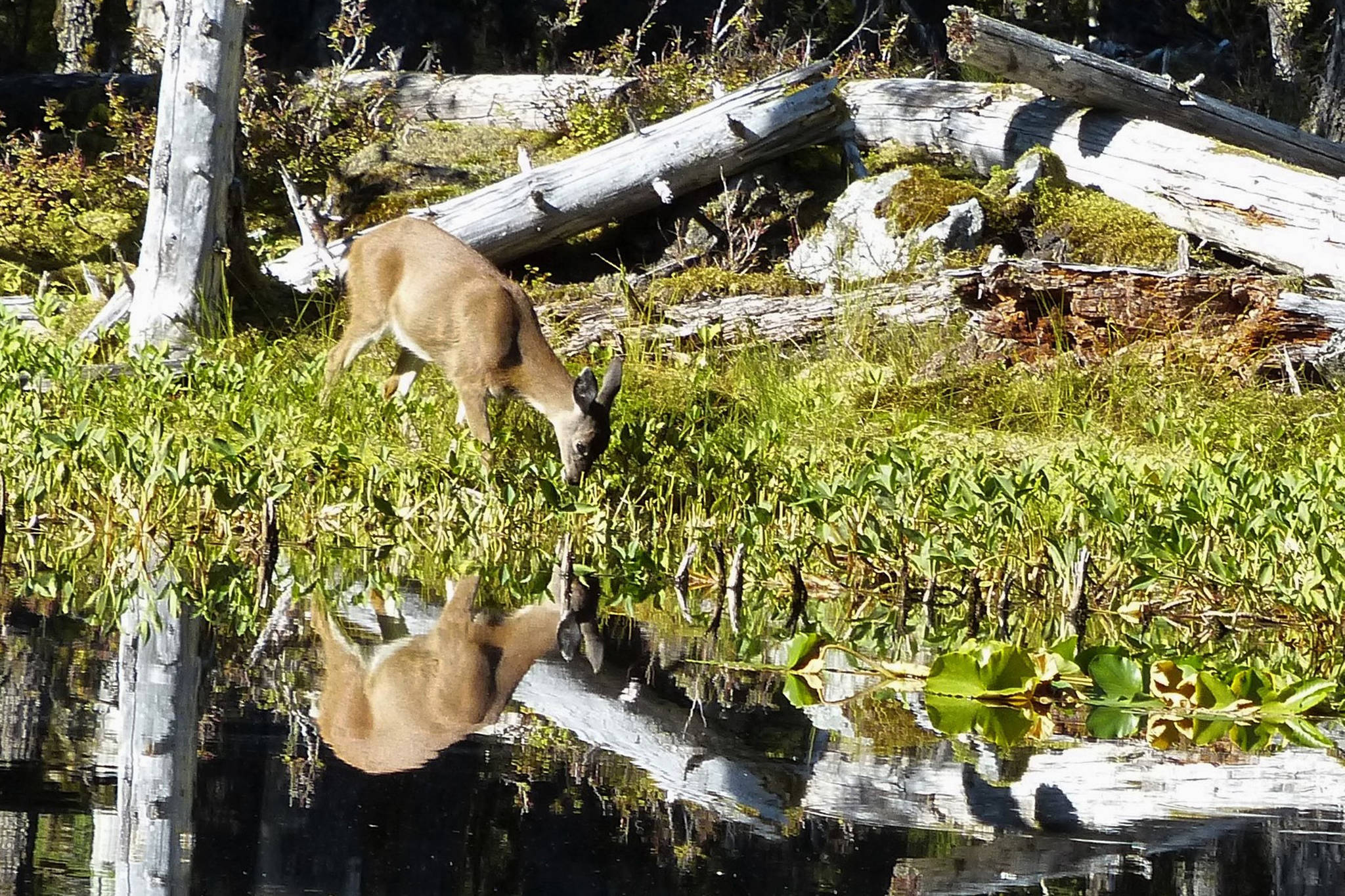Our boots rustled noisily through the tall sedges and sweetgale shrubs as we wended our way into the wetland. When we stopped to listen, we heard some low muttering and growling sounds from the far side of a strip of trees. Then, way off to the right and behind some clusters of pines, we heard yelps and a few yodels. The sandhill cranes were here, and talking.
We waited. After many minutes (or so it seemed), the yodels became many and clamorous. And presently, a small flock rose from behind the pines and took off southward, still calling as they disappeared in the distance. Then another small group lifted off and followed, calling all the way.
The next day, it got even better. As we strolled off a beach where we’d inspected wolf, bear, and crane tracks and watched pectoral sandpipers foraging, a bigger flock of almost 200 birds came up from the wetland, heading directly south. We received a goodbye salute from the cranes as a smaller flock circled over us several times, before heading south.
We’d come to Gustavus in hopes of seeing these sandhill cranes, and the mission was happily successful. The cranes come through Gustavus every fall, from their nesting areas in northern bogs and meadows, but exactly when and how long they stay and how many there are at any time is quite variable, so we felt quite fortunate.
But there was much more to come.
The comfortable place we stayed in had a nice deck from which we had a view of the lower reaches of the Salmon River. We sat out there for morning and afternoon tea, watching kingfishers fly in and juncos fossick in the bushes. Every so often a glossy black bear calmly strode by, ignoring us entirely, intent upon reaching the river and the up-migrating coho.
We took a walk, stopping at a forest pond. On the far side of the pond stood a sleek, beautiful doe, still decked out in her reddish summer coat. She foraged along the edge of the pond, occasionally stumbling in deep holes, nibbling a bit of buckbean, but concentrating apparently on some small willows and underwater greenery. She was watchful, frequently lifting her head with her big grey ears swiveling. Deer are less common than moose over by Glacier Bay, so this elegant lady was a treat.
Thanks to our unusually clear September weather, all the mountains on Chichagof and to the west of the Bay stood out clearly against the sky. For the very first time, I saw Mt. Fairweather in all its splendor, impressive even though it was over 60 miles away. On our last day over there, she collected a small cloud around her peak, but the rest of the jagged range stood clear. One evening we went down to the beach by the dock for the sunset, outlining the mountain ranges in shades of soft orange and pink and gold.
This fall in Juneau, I had to work moderately hard to collect a good harvest of high bush cranberries for making the annual batches of savory ketchup. In Gustavus, it was a different story! Great clumps of translucent red berries festooned the bushes. I think my friends tired of hearing me, “Ooh” and “Aah,” saying, “Oh, just look at that!” So eventually they all pitched in and helped me gather enough for a good batch of ketchup. With much willpower, I bypassed all the rest of the laden bushes that we saw.
There were lots of smaller treats during this visit: a ruby-crowned kinglet singing (usually a sign of spring), sea rocket seeds piled up in wolf footprints on the beach, waves of Canada geese overhead, a female harrier coursing over a meadow, some late-flowering grass of Parnassus and marsh felwort, a bear scat full of rose seeds from a meal entirely of rose hips, open pods of ladies-tress orchids shedding clouds of dust-like seeds (lacking any stored nutrition, they depend on hitching up with a fungus to germinate and grow).
To top it all off, there was a so-tasty dinner of freshly caught coho, garden veggies, and a delectable and spectacular red huckleberry pie! We’d picked those berries the previous day. The only thing better than all of that was the fine companionship, to be savored for a long time.
• Mary F. Willson is a retired professor of ecology. Her essays can be found online at www.onthetrailsjuneau.wordpress.com

